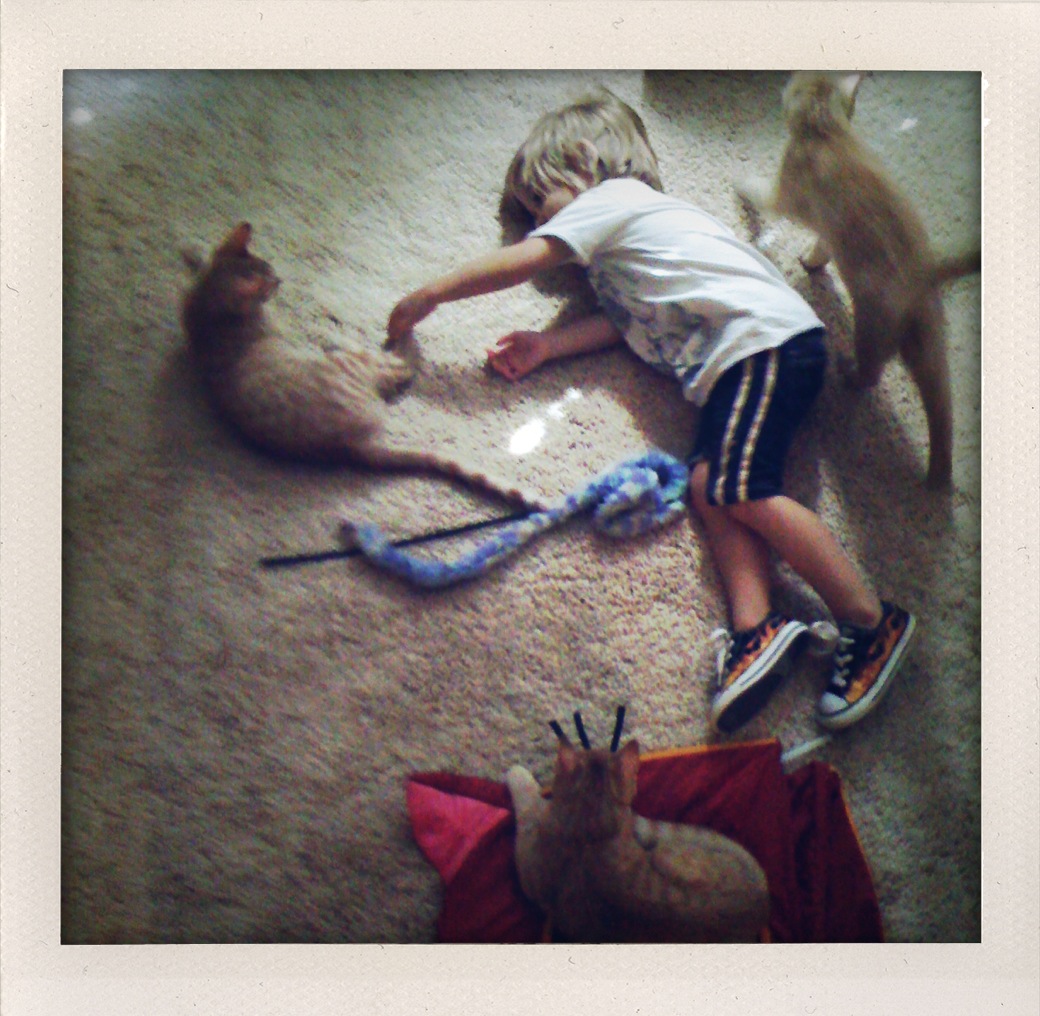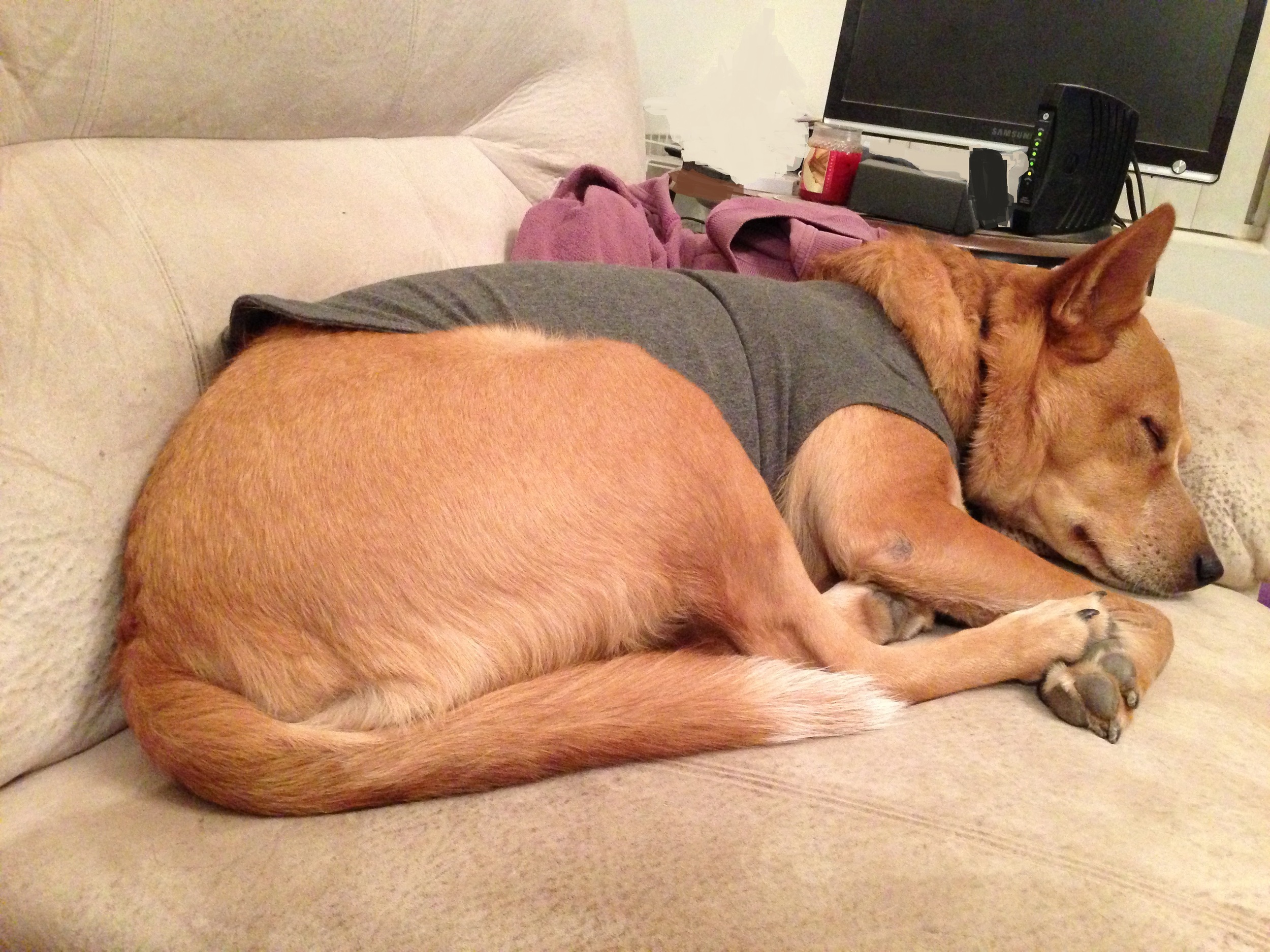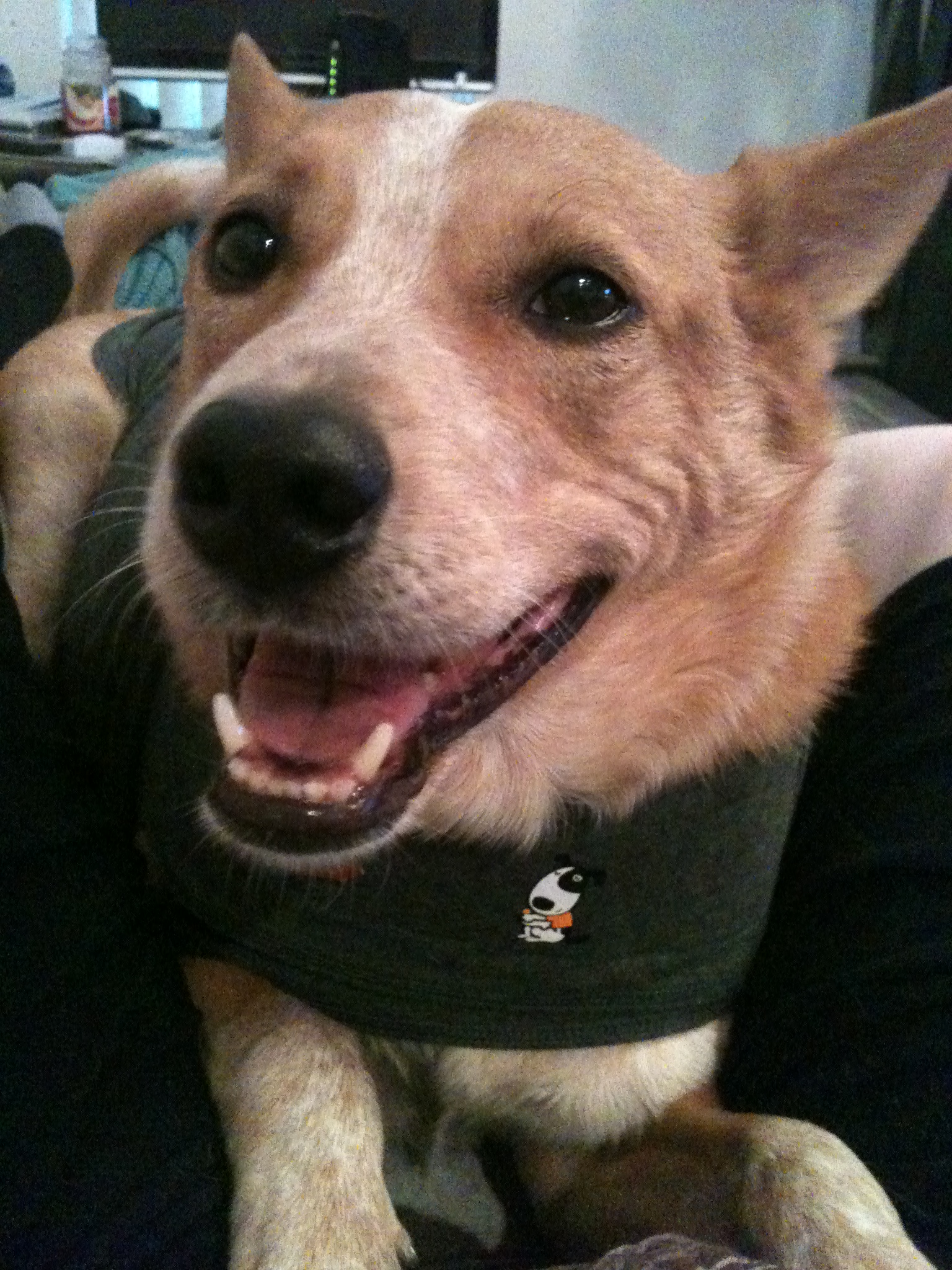My children have been junior pet sitters at Well Minded since before they knew they were junior pet sitters, traveling with me to care for all kinds of animals from typical house pets to reptiles, to farm animals. In addition to teaching them that our clients' homes are to be respected in every way, I have taught them how to treat animals and how to be safe around them. At ages six and four, my children can read animal language better than most, so I feel confident and secure in their ability to practice self control and gentle love.
Even so, the most important rule for children and animals is to never leave them alone with an animal, especially if that animal is unfamiliar to them. I must confess that I do leave my children alone with our animals–a risk I am willing to take since I feel that I can trust all parties. Both animals and children are unpredictable, however, so I realize that there is always a chance something could go wrong. I never leave my children alone with a client's pet, both for the safety of the pet and my children.
Teaching children how to behave in various animal encounters is not only important for their safety, but also for the animal's safety.
You obviously don't want your child to pull a tail or hit an animal–these things should be easy to teach, unless your child has a bit of Lucifer inside, in which case, it's best so steer clear of animals until an exorcism can be performed. Assuming your child's soul is pure with delightful intentions, here are a few suggestions:
• I recommend exposing your child to animals at an early age, if only just to observe. The more your child sees animals, the more comfortable and familiar they will be with animals. And I don't just mean picture books. Make sure your child is comfortable around all family pets, and vice-versa. Take your baby to the zoo and talk about the animals. Take opportunities to interact with friends' pets.
• Talk to your child about how the animals feel in a given situation. Jumping next to a napping cat may produce a reaction in the cat that is hilarious to the child, but the cat has been startled and will most likely steer clear of the child in the future, breaking a possible bond. Explain that the cat feels scared and startled. Most children are born with a natural compassion for animals. If that tendency is fostered, it is easy for a child to respect an animal's feelings and space.
• Model good behavior around animals, and explain what you are doing, even if it seems mundane. "This dog likes it when I pet him from the top of his head to the middle of his back. He doesn't like his nose touched. I'm going to pet him the way he likes it so that we can be great friends."
• No matter the situation, children need to be calm around animals. Unless it's a game of fetch in the backyard with the family dog, keeping a calm, confident energy around all animals is important. Animals pick up on human energy in an instant and are often leery around children making erratic movements, squealing, or being careless. Kids will be kids, and I don't want to take all the fun out of being around an animal, but if treated with respect and care, an animal will show you it's best side, which is much more fun for everyone.
• Teach your children how to restrain themselves around animals. All kids want to do is touch and pet and love, with the best of intentions, but some animals can be shy or standoffish, or even scared. Pushing the animal to interact is a big mistake. I teach my children to be calm and ignore a barking dog. I teach them not to chase a cat who wants privacy. And with enough practice, they have grown to restrain themselves on their own.
• Learn about and teach your children animal language, even if it's just the basics. What does a cat's hiss mean? Why is the dog's hair standing on end? Why did the tortoise pull into his shell? All of these are warning signs and children should be taught to recognize them.
Children and animals go together like pb & j. Foster your child's natural curiosity. If you take every opportunity early on, your kids will grow to love animals and treat them with the respect they deserve.

Original content by well minded word.






